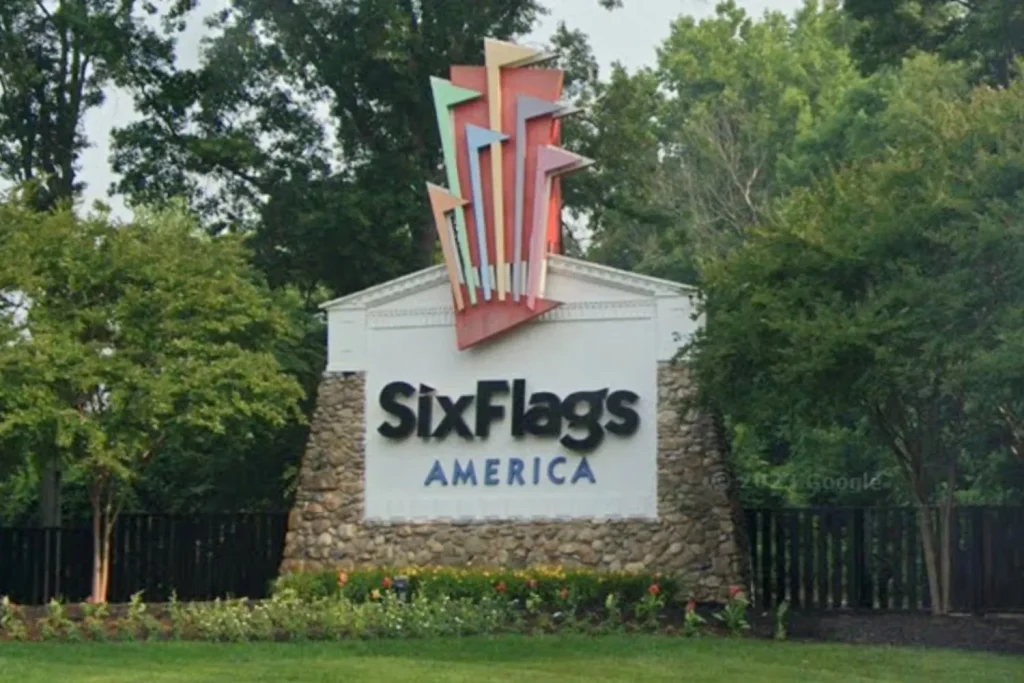End of an Era: How Six Flags America in Maryland Closed its Gates for Good After Decades of Thrills and Memories
As the sun set on Sunday, November 2, 2025, a familiar roar of excitement gave way to a deep sigh of nostalgia at Six Flags America in Bowie, Maryland. After more than five decades as a fixture of family fun and thrill-ride adventure in the Washington D.C. metropolitan region, the park officially closed its gates for the final time. The announcement marked the end of an era not only for the park’s guests and employees but for the larger community that grew up alongside its roller-coasters, midway games, and summer screams.

The park, located in Prince George’s County just east of the District, opened originally in 1974 as The Wildlife Preserve — a drive-through safari experience on farmland that would undergo several rebirths, becoming Wild World, Adventure World, and ultimately rebranded as Six Flags America in 1999 following acquisition by the Six Flags chain. In its later years, it grew into a 500-acre site with dozens of rides, a water-park expansion, and even status as a Certified Autism Center park — emblematic of both thrills and service.
The closure decision emerged quietly in a May 1, 2025, press release by parent company Six Flags Entertainment Corporation, which declared that Six Flags America and its adjacent water park, Hurricane Harbor, would cease operations at the end of the 2025 season. “As part of our comprehensive review of our park portfolio, we have determined that Six Flags America and Hurricane Harbor are not a strategic fit with the company’s long-term growth plan,” stated CEO Richard A. Zimmerman. That final day, November 2, became a moment of mixed emotions: one filled with celebration, let-down, and above all, remembrance.

The final season saw the park honoring its legacy while preparing for the closure. Plans for its annual Fright Fest event were scrapped, replaced instead by shorter weekend “Kids Boo Fest” programs, acknowledging the coming end. Meanwhile, season-pass holders and daily guests were given one last chance to walk the midway, ride their favorites, and soak in the summer sun over water slides, looping coasters, and food stands. Many took photographs, held hands on roller rides, and shared stories of first dates, family outings, and teenage summers.
For the local community, however, it has been a jarring shift. Six Flags America served more than just thrill-seekers: it gave jobs (approximately 70 full-time associates and hundreds of seasonal workers), offered teenage summer employment, and contributed to the regional tourism economy. Prince George’s County officials acknowledged the park’s closure as more than an entertainment loss — it is a cultural touchstone. “For decades, Six Flags has been more than just a theme park — it is a cherished part of our county’s identity, a source of joy for families, and a hub of economic activity,” said Acting County Executive Tara H. Jackson.
Fans of theme parks, roller-coaster enthusiasts, and local residents alike have expressed shock, sadness, and concern. Many posts on social media recall the rickety yet beloved wooden coaster Wild One, the soaring Firebird, the water-park rush, summer strolls, and teenage job memories. One report noted that “the final day drew large crowds, though a mechanical failure ended the iconic Superman: Ride of Steel prematurely.” The park’s legacy is not without blemishes but remains deeply embedded in Mid-Atlantic amusement history.
The decision to close the park came as part of broader structural changes within Six Flags. In 2024, the company merged with Cedar Fair, creating one of the largest amusement-park operators in the U.S. and triggering a review of park-portfolio performance. Six Flags executives determined that the Bowie property, despite its history and location just outside Washington D.C., did not align with projected margin targets and strategic priorities. The site will be marketed for redevelopment, opening a new chapter for the land even as the memories linger.

Yet for all the financial calculations, the human side of this closure stands front and center. Workers who spent summers staffing roller-coaster platforms, local families making annual pilgrimages, couples going on first dates at the park — they are the ones left holding vouchers, ride photos, and childhood memories. Local leaders warn that while redevelopment offers an opportunity, the loss of accessible, affordable family entertainment leaves a gap not easily filled. Council member Wala Blegay said: “Two losses in one week don’t send a positive vibe,” referring to the park and another major announcement in the county.
As the final trains rolled into the station on November 2, signs reading “Thank you for 50 years of family fun” were posted on the park’s social-media pages. Guests met for one last ride, walked the paths, shouted on coasters, felt the breeze of the drop tower, and quietly reflected on the passage of time. The park’s presence in the landscape of leisure is ending, but its imprint on countless lives remains.
Economically, the closure highlights the challenges facing large outdoor entertainment venues in a changing consumer market: rising costs, shifting leisure-time habits, competition from streaming and digital experiences, and corporate pressure to maximize returns on real estate. Analysts note that such closures may become more common as companies evaluate which parks are optimal for long-term growth while others become ripe for sale.
And yet, amid the numbers and strategy, what remains is emotional memory. A father lifting his daughter onto her first roller coaster, teenagers racing through the water park in summer, family reunions in the shade of the old wooden coaster, the cry of joy on a fall Fright Fest night, and the group photo at park exit — these moments aren’t easily replaced. Six Flags America wasn’t just property; it was a place. And places matter.
As redevelopment plans unfold, what becomes of the land is not yet clear: residential? Mixed-use? Or perhaps repurposed for another form of entertainment? County officials say they will push for a “thoughtful and inclusive redevelopment process that supports jobs, growth, and long-term community benefit.” For many, this offers a sliver of hope that the legacy of the site won’t vanish entirely — that new opportunities will spring from old joy.
For now, though, the gates have closed. The park that welcomed millions stands silent. In its place remains the echo of laughter, the imprint of adrenaline, and the intangible sense that childhood summers, with their mix of fear and delight, belong to a different era. While the company may move on, and the property may transform, Six Flags America’s role in personal histories lives on. Countless guests carry inside them the memory of when the world stood still atop a roller-coaster drop, when they screamed at a water slide launch, and when the sun set on an age of carefree thrills. As one chapter ends, the ride in life simply continues.


